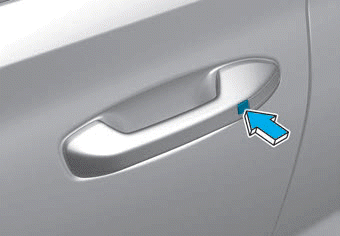Hyundai Palisade: Hydraulic System / Valve Body
Description and operation
| Description |
| • |
The valve body mounted is inside the transaxle.
|
| • |
The valve body is essential to automatic transaxle control and consists
of various valves used to control the oil feed from the oil pump.
|
| • |
Specifically, these valves consist of pressure regulator valves, oil
redirection valves, shift valves, and manual valves.
|
| • |
The body also features electronic solenoid valves that ensure smooth
gear changes.
|
Repair procedures
| Removal |
|
| 1. |
Turn ignition switch OFF and disconnect the negative (-) battery cable.
|
| 2. |
Remove the battery and battery tray.
(Refer to Engine Electrical System - "Battery")
|
| 3. |
Remove the air duct and air cleaner assembly.
(Refer to Engine Mechanical System - "Air Cleaner")
|
| 4. |
Remove the under cover.
(Refer to Engine Mechanical System - "Engine Room Under Cover")
|
| 5. |
Drain the coolant.(If equipped ATF warmer)
(Refer to Engine Mechanical System - "Coolant")
|
| 6. |
Loosen the drain plug (A) and reinstall the drain plug after draining
ATF totally.
|
| 7. |
Loosen the fixing bolt (A) and then removing the bracket.
|
| 8. |
Loosen the fixing bolts (A) and then removing the bracket.
|
| 9. |
Separate the ATF cooler hose (A).
|
| 10. |
Loosen the upper bolts (A) of the valve body cover.
|
| 11. |
Remove the valve body cover (A) after removing the bolts.
|
| 12. |
Loosen the bolts and then Separate the main harness (A).
|
| 13. |
Remove the valve body assembly (A).
|
| Installation |
| 1. |
To install, reverse the removal procedures.
|
| 2. |
The existing valve body cover gasket (A) must be replaced with a new
one. (Do not reuse it.)
|
| 3. |
Perform the procedures below after in replacing the valve body assembly.
|
| 4. |
Refill the automatic transaxle with fluid.
(Refer to Hydraulic System - "Fluid")
|
| 5. |
Add the coolant. [In case by ATF warmer apply]
(Refer to Engine Mechanical System - "Coolant")
|
| 6. |
Clear the diagnostic trouble codes (DTC) using the diagnostic tool.
Disconnecting the battery negative terminal will not clear the DTCs.
Clear DTCs using the diagnostic tool at all times.
|
| 7. |
Reset the automatic transaxle adaptive values using the diagnostic tool.
|
| 8. |
Perform the oil pressure characteristics input procedure using the diagnostic
tool.
|
| 9. |
Perform the TCM adaptive values learning procedure.
(Refer to Automatic Transaxle Control System - "Repair procedures")
|
| 10. |
After installing, check for leakage of fluid from hose connection during
engine start.
|
 Electronic Oil Pump (EOP)
Electronic Oil Pump (EOP)
Repair procedures
Removal
1.
Turn ignition switch OFF and disconnect the negative (-) battery cable.
2...
 Torque Converter Clutch Control Solenoid Valve (T/CON_VFS)
Torque Converter Clutch Control Solenoid Valve (T/CON_VFS)
Description and operation
Description
•
Torque converter control solenoid valve (T/CON_VFS) is attached to the
valve body...
Other information:
Hyundai Palisade (LX2) 2020-2025 Service Manual: Description and operation
Description The ECM (Electro Chromatic inside rear view Mirror) is intended dim the reflecting light in the rear view mirror. The forward facing sensor detects brightness of the surroundings, while the rearward looking sensor is for the light from the rear...
Hyundai Palisade (LX2) 2020-2025 Service Manual: Rear Mud Guard
Repair procedures Replacement • When removing with a flat-tip screwdriver or remover, wrap protective tape around the tools to prevent damage to components...
Categories
- Manuals Home
- 1st Generation Palisade Owners Manual
- 1st Generation Palisade Service Manual
- Electronic Child Safety Lock System
- AC Inverter
- Wireless Cellular Phone Charging System
- New on site
- Most important about car
Locking your vehicle

To lock your vehicle using the door handle button or the Smart Key:
1.Make sure all doors, the hood and the liftgate are closed.
2.Make sure you have the smart key in your possession.
Copyright © 2025 www.hpalisadelx.com




















